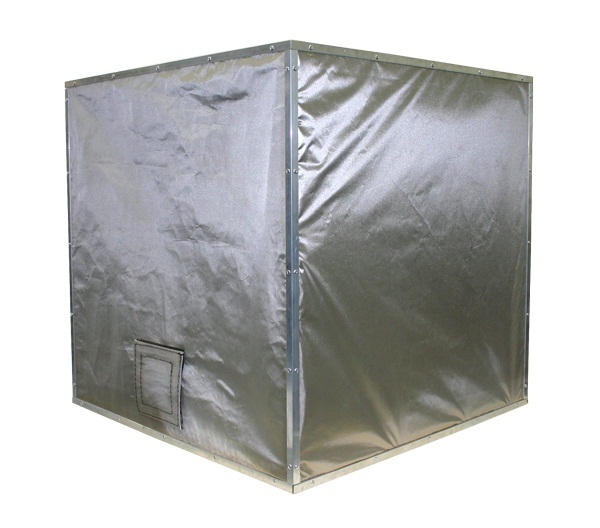Faraday Cages 101: How They Protect Us From Electric Fields
Within our ever more wired world, the importance of safeguarding our electronic gadgets and data has at no point been clearer. Since we depend more on technology for communication, employment, and everyday life, grasping how to protect our electronics from detrimental electromagnetic fields becomes essential. One of the most effective solutions for this protection is a Faraday cage, a barrier that blocks outside electric fields and electromagnetic radiation. If you are getting ready for a potential electromagnetic pulse event or simply want to protect your gadgets, knowing how to select the right Faraday cage can make all the distinction.
In this article explore the various features and considerations to keep in mind when choosing a Faraday cage. From understanding the materials that provide the best shielding to determining the most suitable size and type for your needs, we will guide you through essential factors. We'll also look at practical applications and offer tips for testing the effectiveness of your chosen cage, making certain that your precious electronics remain sheltered from possible threats.
Key Features of Faraday Enclosures
When considering a Faraday enclosure, one of the most important features to assess is the material used in its creation. Materials such as copper wire and aluminium are favored due to their superior electrical conductivity and ability to block electromagnetic fields efficiently. The gauge of the material also plays a crucial role; more robust walls provide better shielding against external interference. Comprehending the characteristics of various materials can help you make an knowledgeable decision about the best type of cage for your specific needs.
Another essential aspect to look for is the cage's architecture and build. A robustly designed Faraday cage will have continuous seams and joints to prevent any gaps that could compromise its shielding capabilities. The design should guarantee that there is no direct exposure of the inside to outside electromagnetic fields. Additionally, consider whether the cage is solid or has a mesh pattern; both have their advantages and disadvantages, but solid cages generally offer better shielding against various frequencies.
Dimensions and mobility are also key features when choosing a Faraday cage. Depending on the intended use, you might need a larger cage for larger equipment or a mobile option for travel and crisis situations. Mobile cages can be particularly helpful for those who need to protect their electronic devices on the go, while fixed cages might be better fitting for home or office environments. Ultimately, https://zenwriting.net/faraday-devices484/the-manner-in-which-cages-of-faraday-are-used-in-medical-instruments and portability of the cage should align with your specific requirements and lifestyle.

Material and Size Considerations
The choice of substance is essential when choosing a Faraday cage, as it directly influences its ability to shield. Metals such as copper alloy, aluminum, and steel are frequently used due to their superior conductive properties. This metal offers superior protection and versatility, making it perfect for applications where high performance is required. Aluminum, while somewhat less efficient, is lighter and frequently more cost-effective, making it a popular option for many consumer products. This material, although heavier, provides strong protection and is typically used in permanent setups. Understanding the specific requirements of your surroundings will help in deciding which metal suits your needs best.
Dimensions also plays a crucial role when selecting a Faraday cage. It is critical to ensure that the cage has sufficient room to house all intended devices or devices while maintaining proper shielding. A cage that is too small may result in reduced protection, as it can create gaps or inadequate shielding. On the other hand, overly large cages can be cumbersome and inefficient, taking up more space and perhaps not offering the required protection. Careful planning of the size can guarantee that not only are the devices protected but that the cage is practical and usable.
When evaluating your needs, consider the intended use of the Faraday cage—be it for home use, on the go, or emergency preparedness. Transportable cages should be easy to carry and compact, enabling for simple portability, while fixed installations may focus on durability and immobility for optimal protection. The decision between these options may depend on factors like how often you use it and individual protection requirements. By carefully assessing both material and size, you can select a Faraday cage that offers maximum protection customized to your situation.
Assessing and Contrasting Faraday's Cages
When selecting a Faraday cage, it is crucial to grasp how to test its effectiveness. Utilizing a smartphone or radio device, you can test the signal reception in the cage. Initially, turn on the device outside the cage and observe its signal strength. Afterward, place the device within the cage and see if the signal drops to zero. This simple evaluation can offer immediate insight into the protective capabilities of the cage you are evaluating.
Contrasting different models is also crucial. Look for specific characteristics such as the category of material used, the gauge of the shielding, and the construction quality. RF testing equipment suppliers may want to investigate customer reviews, which often detail real-world performance and highlight potential drawbacks. Comprehending the material used can be crucial since varied metals provide different levels of electromagnetic shielding.
Another consideration to consider is size and portability. Determine whether you need a fixed installation or a mobile solution. Portable cages can be very handy for on-the-go protection, while stationary options might provide enhanced shielding for fixed electronics. Taking the time to evaluate your options based on your specific requirements will ensure you choose the appropriate Faraday cage for your needs.